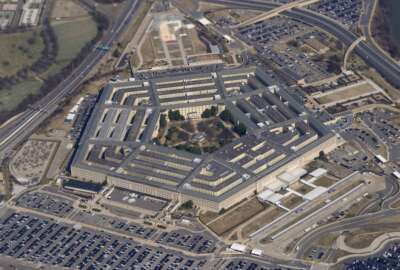The Defense Department has plenty of challenges to focus on next year.
But Adm. Jamie Barnett, the senior vice president of national security policy at the Potomac Institute for Policy Studies, says one of the biggest challenges faced by the Pentagon is one that everyone seem to forget about.
| Jamie Barnett’s Top 3 for 2013 |
- Securing the Supply Chain. Almost every major DOD system uses and is dependent on microelectronic components that are manufactured overseas. Increasingly the DOD has discovered unwanted additions and capabilities on these components that severely jeopardize the integrity of our systems. Sometime the components are just counterfeit copies that do not perform as intended (the Gray Market). However, the microelectronics component may have had capabilities inserted that allow an enemy to eavesdrop on our activities and even turn our systems off during times of conflict. Unaddressed, this threat has the potential to completely abrogate our military might during times of crisis. The supply chain threat goes beyond DOD and includes important critical infrastructures, such as telecommunications and energy. Supply chain threats are a significant and under-reported component of cybersecurity.
Solving the challenge: First, U.S. leaders must learn about and recognize the threats, bring all of the stakeholders to the table, and negotiate solutions that work. Second, new authorities must be enacted and even changes in the organization may be necessary.
- The rise of New World competitors.. China and Europe have discovered the secret of investing in science, technology, and industry. Where once the USA was the leader in all S&T areas, increasingly the rest of the world is spending as much or more that we are. The result is rise in the market control, national capability, and international influence of some parts of the world particularly China. The rise of this regional power into an international force will demand the thoughtful attention of the U.S. national security structure during and time when we are downsizing and re-positioning our forces.
Solving the challenge: The U.S. must formally examine its own science and technology structure, revamp its organization and revitalize public and private investment in science and technology. The U.S. must re-think its approach to science and technology education, career development and even how we treat foreign scientists, engineers and technologist whom we have educated in the U.S. or who want to come to the U.S. As the wars in Iraq and Afghanistan become history, the U.S. needs a fresh look at its world force disposition and strategy.
- Technological Surprise. As the world invests heavily in new technologies and the pace of technology increases (the pace of S&T has increased on an exponential rate for the past two decades), the potential for surprise increases. The launch of Sputnik by the Soviets in the late 1950’s showed how technological advances can empower competitors in critical ways. Today the world is investing and exploring sciences and technologies that could vastly increase their influence. The U.S. must anticipate technological leaps, try to lead them and avoid the surprise and insecurity which would result from missing those technologies.
Solving the Challenge: In addition to additional investment in science and technology, the U.S. needs to commit to strategic scientific goals that will ensure the technological leadership of the Nation, its economic vitality and its national security. Here are a few examples:
Quantum computing technology. The first nation to achieve this capability will be able to read the mail of most of the rest of the world. The applications of this technology for industry and defense are immeasurable, and the U.S. should make its goal to be first.
Massive Data analysis and control. Being able to understand correlate and manipulate the massive amounts of data increasingly collected around the world will create the ability to understand and shape world events as never imagined before.
Neurotechnology and neuro-weapons. As the science of the mind continues to expand and deepen, the application of brain-machine interfaces, enhanced cognition, neuro-marketing and other avenues of exploration have huge implications for industry and society. Some of these developments have significant ethical, legal and sociological implications, especially those applications that could be weaponized.
|
Copyright
© 2024 Federal News Network. All rights reserved. This website is not intended for users located within the European Economic Area.





